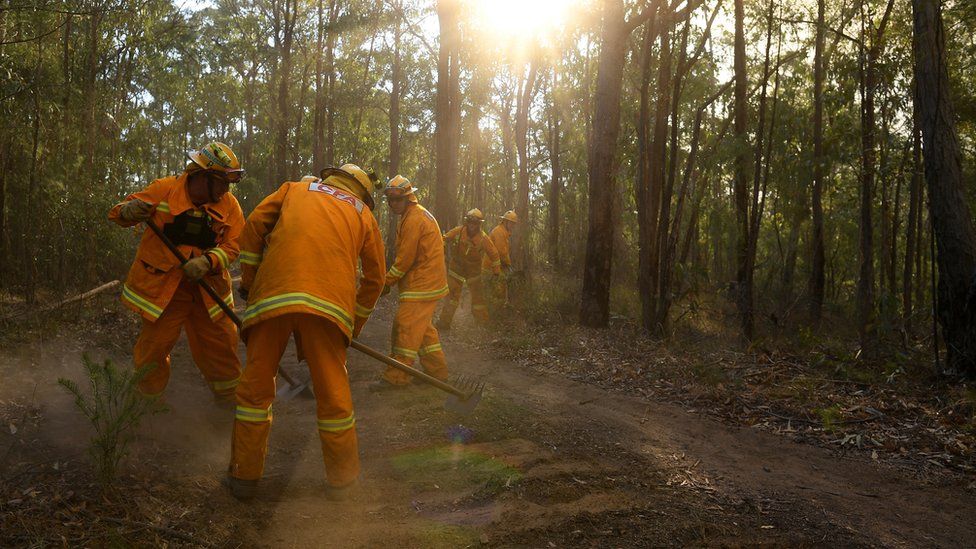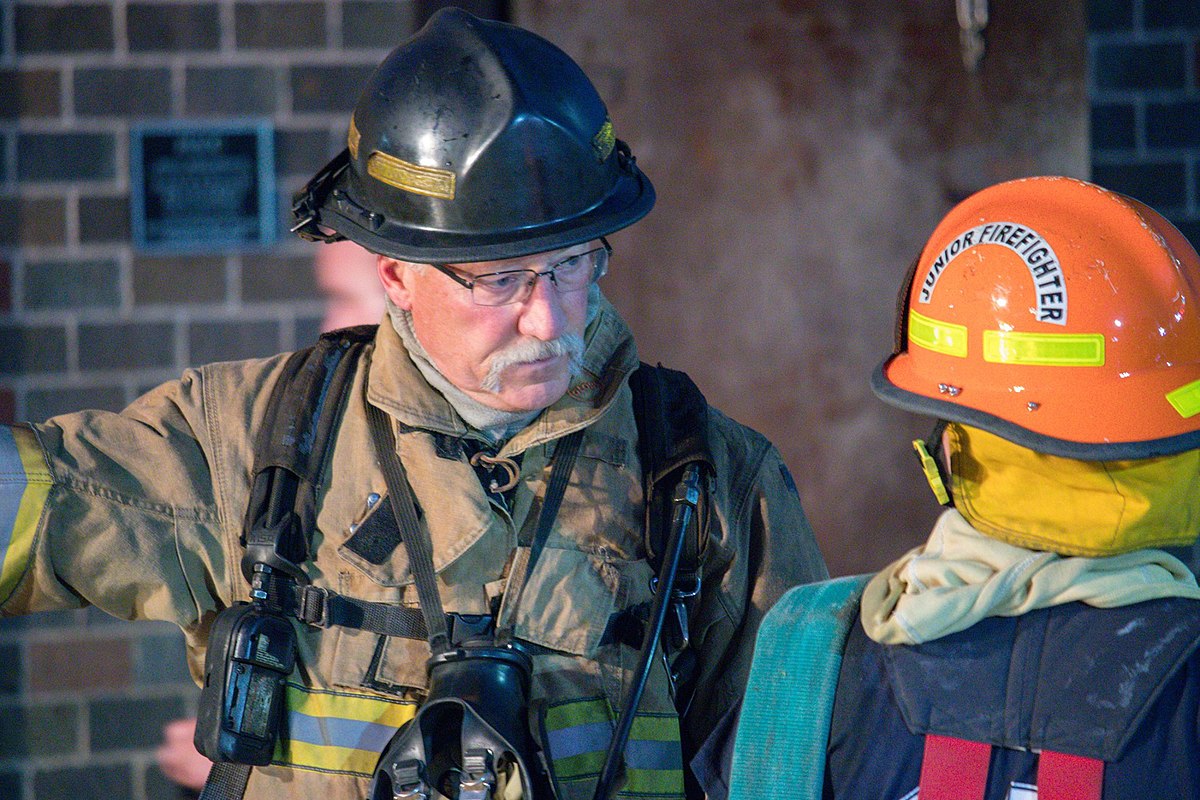Forest fire fighting techniques involve strategies and methods used to combat and suppress fires in wooded areas, typically involving physical methods such as water and firebreaks, as well as aerial resources like helicopters and airplanes for aerial water drops and chemical retardants. These techniques are crucial in preventing the spread of fires and protecting lives, property, and ecosystems from the devastation caused by forest fires.
Forest fires pose a significant threat to the environment, wildlife, and human lives, making effective fire fighting techniques crucial in minimizing the damage they can cause. These techniques involve a range of strategies and methods that focus on suppressing and controlling fires in forested areas.
By utilizing physical techniques such as creating firebreaks and employing aerial resources like helicopters and airplanes, firefighters strive to prevent the fire from spreading and causing further destruction. This article delves into the various techniques employed in forest fire fighting, highlighting their importance in safeguarding both natural habitats and human settlements from these devastating blazes.

Credit: www.bbc.com
Understanding The Basics Of Fire Behavior
Forest Fire Fighting Techniques
Forest fires can cause immense damage to our environment, endanger wildlife, and pose a significant threat to human life and property. To effectively combat these destructive forces, firefighters must have a comprehensive understanding of fire behavior. By analyzing factors such as fire ignition, weather patterns, and fuel types, fire experts can develop strategies to combat forest fires.
Let’s delve deeper into the basics of fire behavior and explore the various elements that influence the spread and behavior of these wildfires.
How Do Forest Fires Start?
Understanding how forest fires originate is crucial in preventing and managing these hazardous events. Here are some key points to consider:
- Human activity: Many forest fires are the result of human activities such as unattended campfires, discarded cigarettes, or intentional acts of arson.
- Lightning strikes: Natural causes like lightning strikes can ignite forest fires, especially in dry or drought-affected areas.
The Role Of Weather In Fire Spread
Weather conditions play a pivotal role in determining the behavior and spread of forest fires. Consider the following elements:
- Wind: Strong winds can promote fire spread by carrying burning embers and spreading flames rapidly across vegetated areas.
- Temperature: Higher temperatures increase the speed of combustion and contribute to the overall intensity of the fire.
- Humidity: Low humidity dries out vegetation, making it more susceptible to ignition, while higher humidity levels reduce the fire’s ability to spread.
Fuel Types And Fire Behavior
The type of fuel present in an area greatly influences fire behavior and the difficulty of suppression. Let’s explore some key points:
- Fine fuels: Dry grasses, leaves, and small twigs are considered fine fuels. They ignite quickly and contribute to the rapid spread of fire.
- Ladder fuels: These are medium-sized vegetation, such as shrubs or small trees, that allow fire to climb from the ground to the treetops, increasing the intensity and severity of the fire.
- Crown fuels: The uppermost parts of trees, including branches, leaves, and needles, are referred to as crown fuels. When these ignite, they can create highly intense and dangerous fires.
Understanding fire behavior is essential for firefighters to develop effective strategies and tactics to combat forest fires. By considering the different ways fires start, the influence of weather conditions, and the types of fuel involved, fire experts can better predict fire behavior and plan accordingly.
With this knowledge, we can enhance our abilities to protect lives, property, and our precious forests.
Preparing For Forest Fire Fighting
When it comes to forest fire fighting, preparation plays a crucial role in ensuring the safety of firefighters and the effective suppression of fires. In this section, we will explore the essential training for firefighters, the tools and equipment necessary for fire suppression, and the setup of effective firebreaks.
Essential Training For Firefighters
Firefighters who combat forest fires require specialized training to handle the unique challenges they face. Here are key points related to their training:
- Basic firefighter training: Firefighters undergo comprehensive training programs that cover essential fire suppression techniques, safety protocols, use of equipment, and teamwork.
- Wildland fire training: Firefighters receive specific training to understand the behavior of forest fires, assess risks, and implement suppression strategies in various terrain and weather conditions.
- Incident command system (ics): Understanding the ics structure allows firefighters to efficiently coordinate with other response teams, establish command hierarchies, and ensure effective communication during firefighting efforts.
- Safety and survival training: Firefighters are trained to prioritize their safety and understand survival techniques in hazardous situations. This training includes self-rescue techniques, emergency shelter deployment, and understanding and mitigating risks associated with wildfire behavior.
Tools And Equipment For Fire Suppression
Equipping firefighters with the right tools is vital for successful fire suppression. Here are some key tools and equipment used in forest fire fighting:
- Fire hose and nozzle: Firefighters use high-pressure hoses and nozzles to deliver water or fire-retardant foam onto the flames to extinguish or control the fire’s spread.
- Hand tools: Firefighters carry a range of hand tools such as pulaskis, mcleods, and shovels. These tools enable them to remove combustible vegetation, create firebreaks, and control the fire’s advance.
- Fire shelters: Firefighters have fire shelters as a last resort when they cannot escape an approaching fire. These shelters provide temporary protection from radiant heat and direct flames.
- Chainsaws and axes: Chainsaws and axes help firefighters clear paths, remove obstacles, and create firebreaks by cutting down trees and vegetation.
Setting Up Effective Firebreaks
Creating firebreaks is essential for controlling wildfires by slowing down or stopping the spread of the fire. Here are key points to consider when setting up firebreaks:
- Clearing vegetation: Firefighters clear a strip of land by removing flammable vegetation, such as dry shrubs, plants, and fallen debris, that can provide fuel for the fire.
- Widening the break: Widening the firebreak by removing more vegetation strengthens the barrier and helps prevent the fire from crossing.
- Controlled burns: Conducting controlled burn operations within the firebreaks can remove fuel and reduce the intensity of the approaching fire.
- Maintaining the firebreak: Regular maintenance of firebreaks, including removing regrown vegetation or fallen trees, ensures their effectiveness over time.
Preparing for forest fire fighting involves comprehensive training for firefighters, providing them with the necessary tools and equipment, and setting up effective firebreaks. By equipping firefighters with the skills and resources they need, we can enhance their ability to combat forest fires and protect lives and ecosystems.
Expert Tips & Tricks For Successful Fire Suppression
Forest fires can be devastating, causing extensive damage to ecosystems and posing a significant threat to both human and animal life. However, through effective fire suppression techniques, we can mitigate these risks and protect our forests. In this section, we will explore expert tips and tricks for successful fire suppression, focusing on assessing fire conditions, utilizing water and fire retardants effectively, and creating controlled burns to control forest fires.
Assessing Fire Conditions And Developing Strategies
Understanding the current fire conditions and developing appropriate strategies are crucial steps in successful fire suppression efforts. Here are some key points to consider:
- Conduct a thorough assessment of the fire’s size, intensity, and behavior.
- Evaluate the weather conditions, including wind speed and direction, humidity levels, and temperature.
- Assess the topography and terrain, as well as the presence of fuel sources and potential fire spread pathways.
- Collaborate with fire behavior analysts and incident commanders to gather valuable insights for strategy development.
- Identify potential risks and prioritize areas that require immediate attention.
- Utilize data from remote sensing, such as satellite imagery and infrared technology, to gain a comprehensive understanding of the fire situation.
- Develop a robust incident action plan that outlines specific objectives, tactics, and resources required for effective fire suppression.
Utilizing Water And Fire Retardants Effectively
Water and fire retardants are invaluable tools in the fight against forest fires. Here are some tips for their effective utilization:
- Conduct accurate water and fire retardant drops by employing skilled and well-trained aerial firefighting teams.
- Use helicopters and fixed-wing aircraft equipped with advanced delivery systems to target the fire’s hotspots.
- Coordinate with ground crews to ensure synchronized efforts between aerial and ground operations.
- Prioritize protecting critical infrastructure, communities, and natural resources when allocating water and fire retardant resources.
- Consider the environmental impact of fire retardants and choose eco-friendly alternatives whenever possible.
- Regularly monitor the effectiveness of water and fire retardant application to adjust strategies accordingly.
- Ensure proper maintenance and inspection of firefighting equipment to maximize efficiency during suppression efforts.
- Stay up-to-date with the latest research and technology advancements in water and fire retardant utilization.
Creating Controlled Burns To Control Forest Fires
Controlled burns, when implemented strategically, can be a powerful method to control and prevent the spread of forest fires. Here are some considerations for creating controlled burns:
- Develop a prescribed burn plan that aligns with specific management objectives while considering safety measures.
- Identify suitable areas for controlled burns, focusing on reducing fuel buildup and protecting high-risk zones.
- Implement controlled burns during favorable weather conditions, considering wind speed, humidity, and temperature.
- Ensure the necessary permits and permissions are obtained from relevant authorities.
- Collaborate with local communities and stakeholders to educate and inform them about the benefits and objectives of controlled burns.
- Use techniques such as perimeter ignition, backfires, and strip head fires to establish control lines and redirect the fire’s path.
- Monitor the burn’s progress and adjust strategies as needed to maintain control and prevent unintended consequences.
- Conduct post-burn assessments to evaluate the effectiveness of the controlled burn and refine future strategies.
By following these expert tips and tricks, we can enhance our fire suppression efforts and work towards effectively combating forest fires. Assessing fire conditions, utilizing water and fire retardants effectively, and creating controlled burns are all integral components in safeguarding our forests and minimizing the devastating impact of wildfires.
Conclusion
Effective forest fire fighting techniques play a vital role in minimizing the devastating impact of wildfires. Firefighters and fire management agencies continuously strive to improve their strategies and stay at the forefront of technology and knowledge. Early detection and swift response are key elements in successfully combating forest fires, as they help prevent the spread and escalation of the blaze.
Alongside traditional methods like fire breaks and controlled burns, modern techniques, such as using drones and satellite imaging, offer valuable tools for monitoring and combating wildfires. Collaboration between different agencies and organizations is essential in coordinating efforts and sharing resources.
Public awareness and education on fire prevention and safety also play a crucial role in minimizing the occurrence and severity of forest fires. By employing a combination of proactive measures, advanced technology, and well-coordinated efforts, we can work towards safeguarding our forests and the delicate ecosystems they support.


